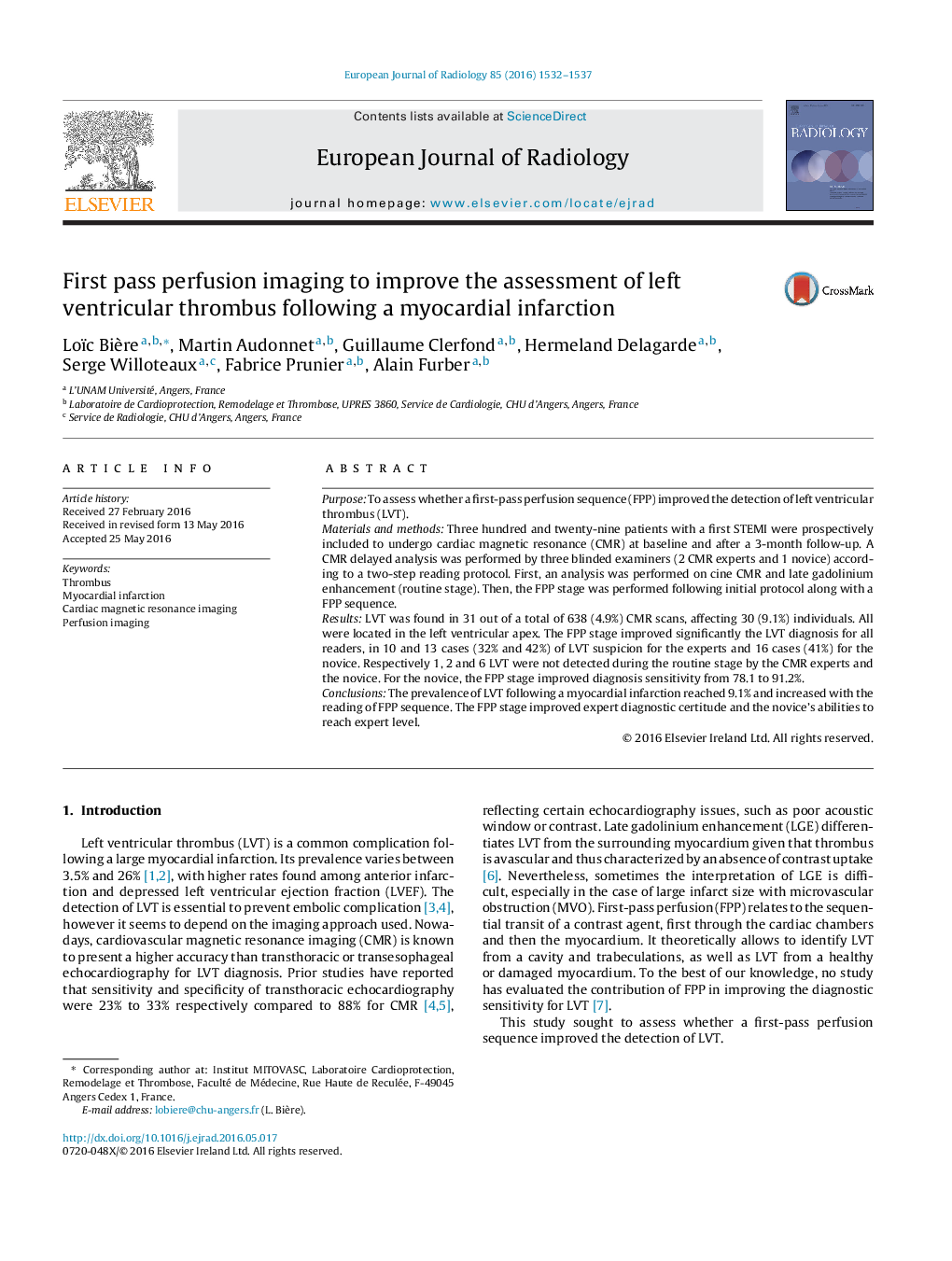| Article ID | Journal | Published Year | Pages | File Type |
|---|---|---|---|---|
| 6242872 | European Journal of Radiology | 2016 | 6 Pages |
â¢Left ventricular thrombus was found in 9.1% of individuals after a STEMI-all were located in the left ventricular apex.â¢First-pass perfusion improved expert diagnosis, avoiding up to two cases (out of 31) of undetected left ventricular thrombus.â¢First-pass perfusion helped the novice's diagnosis skills to approach an expert level.
PurposeTo assess whether a first-pass perfusion sequence (FPP) improved the detection of left ventricular thrombus (LVT).Materials and methodsThree hundred and twenty-nine patients with a first STEMI were prospectively included to undergo cardiac magnetic resonance (CMR) at baseline and after a 3-month follow-up. A CMR delayed analysis was performed by three blinded examiners (2 CMR experts and 1 novice) according to a two-step reading protocol. First, an analysis was performed on cine CMR and late gadolinium enhancement (routine stage). Then, the FPP stage was performed following initial protocol along with a FPP sequence.ResultsLVT was found in 31 out of a total of 638 (4.9%) CMR scans, affecting 30 (9.1%) individuals. All were located in the left ventricular apex. The FPP stage improved significantly the LVT diagnosis for all readers, in 10 and 13 cases (32% and 42%) of LVT suspicion for the experts and 16 cases (41%) for the novice. Respectively 1, 2 and 6 LVT were not detected during the routine stage by the CMR experts and the novice. For the novice, the FPP stage improved diagnosis sensitivity from 78.1 to 91.2%.ConclusionsThe prevalence of LVT following a myocardial infarction reached 9.1% and increased with the reading of FPP sequence. The FPP stage improved expert diagnostic certitude and the novice's abilities to reach expert level.
